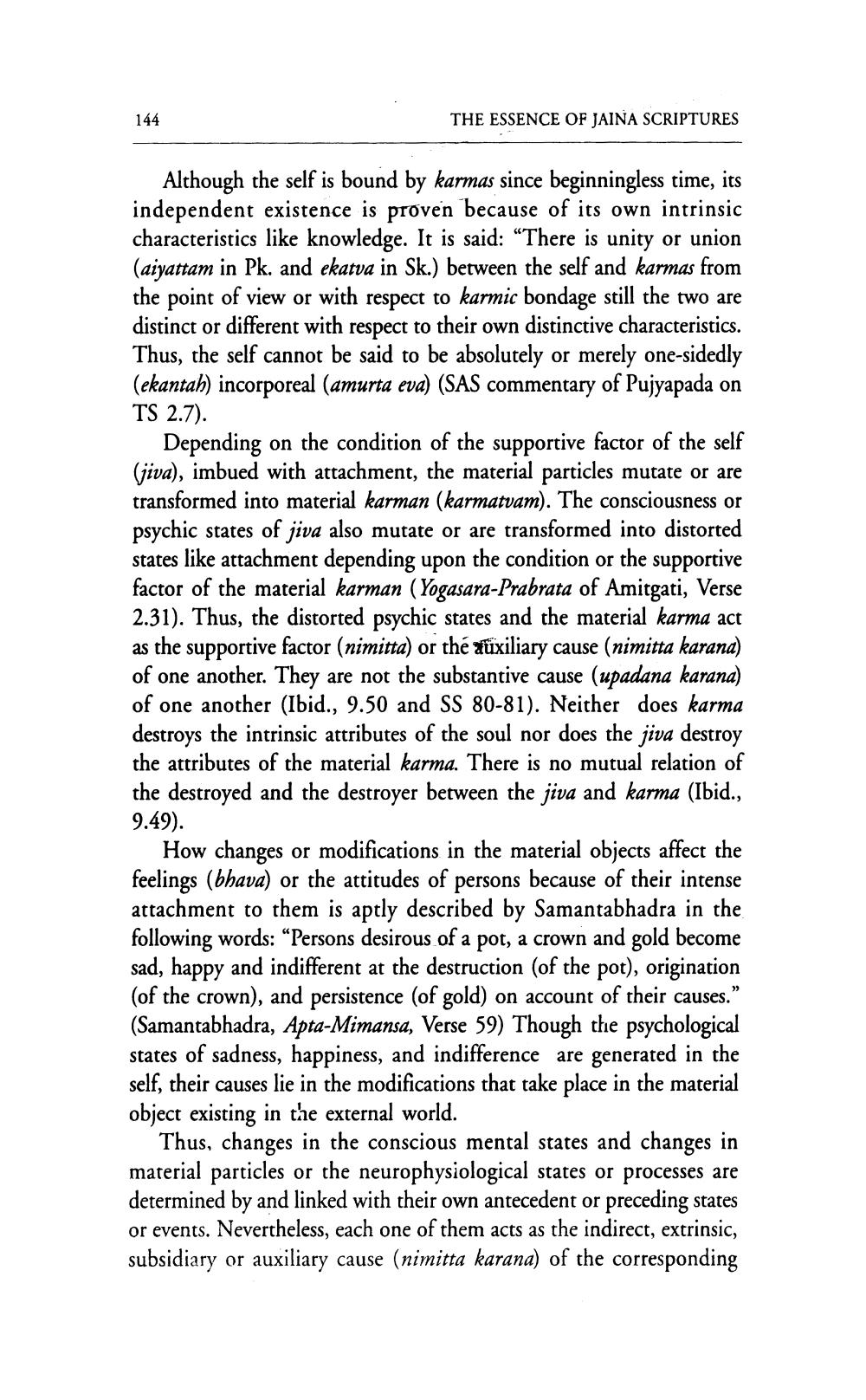________________
144
THE ESSENCE OF JAINA SCRIPTURES
Although the self is bound by karmas since beginningless time, its independent existence is proven because of its own intrinsic characteristics like knowledge. It is said: "There is unity or union (aiyattam in Pk. and ekatva in Sk.) between the self and karmas from the point of view or with respect to karmic bondage still the two are distinct or different with respect to their own distinctive characteristics. Thus, the self cannot be said to be absolutely or merely one-sidedly (ekantah) incorporeal (amurta eva) (SAS commentary of Pujyapada on TS 2.7).
Depending on the condition of the supportive factor of the self (jiva), imbued with attachment, the material particles mutate or are transformed into material karman (karmatvam). The consciousness or psychic states of jiva also mutate or are transformed into distorted states like attachment depending upon the condition or the supportive factor of the material karman (Yogasara-Prabrata of Amitgati, Verse 2.31). Thus, the distorted psychic states and the material karma act as the supportive factor (nimitta) or the auxiliary cause (nimitta karana) of one another. They are not the substantive cause (upadana karana) of one another (Ibid., 9.50 and SS 80-81). Neither does karma destroys the intrinsic attributes of the soul nor does the jiva destroy the attributes of the material karma. There is no mutual relation of the destroyed and the destroyer between the jiva and karma (Ibid., 9.49).
How changes or modifications in the material objects affect the feelings (bhava) or the attitudes of persons because of their intense attachment to them is aptly described by Samantabhadra in the following words: "Persons desirous of a pot, a crown and gold become sad, happy and indifferent at the destruction (of the pot), origination (of the crown), and persistence (of gold) on account of their causes." (Samantabhadra, Apta-Mimansa, Verse 59) Though the psychological states of sadness, happiness, and indifference are generated in the self, their causes lie in the modifications that take place in the material object existing in the external world.
Thus, changes in the conscious mental states and changes in material particles or the neurophysiological states or processes are determined by and linked with their own antecedent or preceding states or events. Nevertheless, each one of them acts as the indirect, extrinsic, subsidiary or auxiliary cause (nimitta karana) of the corresponding




